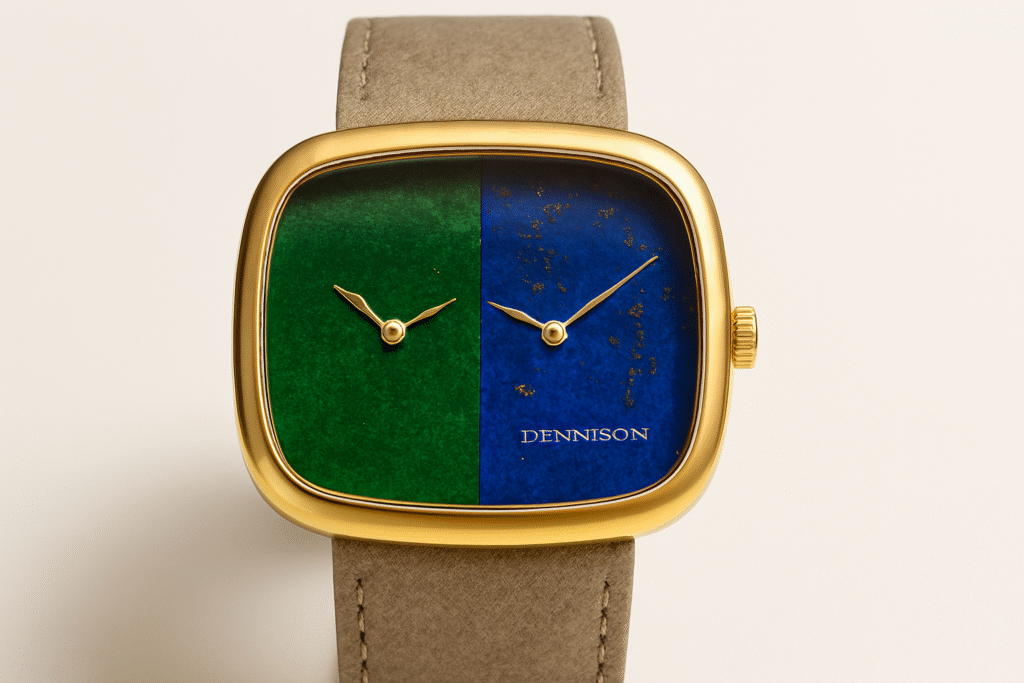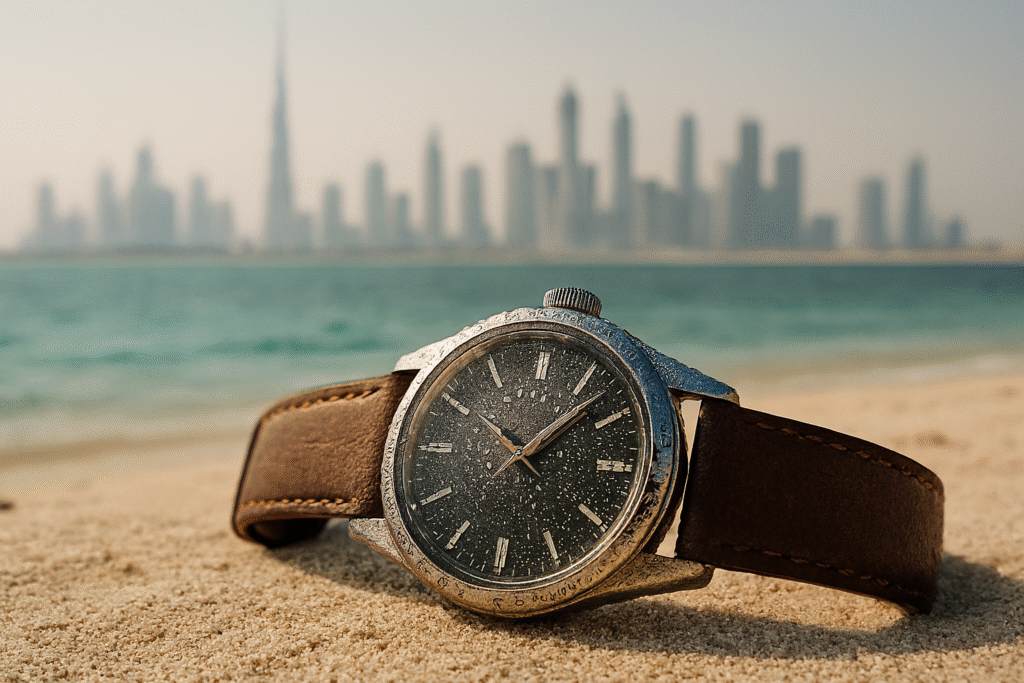Cartier Watchmaking Prize 2025: Talents of Tomorrow
Table of Contents
- Introduction: Cartier Watchmaking Prize 2025
- History of the Cartier Watchmaking Prize
- 2025 Theme: Desk Clock Innovation
- Participation Guidelines for the Cartier Watchmaking Prize
- Prizes and Career Opportunities
- Key Facts About the Award
- FAQs
Introduction: Cartier Watchmaking Prize 2025
The Cartier Watchmaking Prize 2025 celebrates young watchmakers reinterpreting desk clock movements. Winners gain recognition, mentorship, and career opportunities in luxury watchmaking.
Learn more about Cartier timepieces in the guide to Cartier watches and explore global watchmaking competitions. For international industry standards, see Fédération de l’Industrie Horlogère Suisse.
History of the Cartier Watchmaking Prize
Since 1995, the award has recognized over 150 talented watchmakers. Nearly 45% of past winners advance to leadership roles. For context, see Cartier’s history and previous award recipients. Explore The Watches of Switzerland Awards for other international comparisons.
2025 Theme: Desk Clock Innovation in Watchmaking
The 28th edition focuses on “Changing the Balance: Reading and Understanding Time Differently”. Participants reinterpret desk clock mechanisms, blending technical skill with innovative design.
For more inspiration, see modern horology innovations or read about Cartier’s watchmaking philosophy.
Participation Guidelines for the Cartier Watchmaking Prize
Eligible participants include:
- Watchmaking students from Switzerland, France, Germany, and Belgium
- Apprentices in recognized programs
- ES microtechnology technicians
Learn about luxury watchmaking schools or apprenticeships in horology. For international training standards, visit WOSTEP.
Prizes and Career Opportunities
Six winners will receive:
- A Cartier watch each
- Immersive experiences in France and Switzerland
- Internships for first-prize winners at Cartier’s Manufactures & Ateliers
Explore horology careers or international luxury watch internships for additional professional pathways.
Key Facts About the Award
- Founded: 1995
- Editions held: 28
- Participating countries: Switzerland, France, Germany, Belgium
- 45% of past winners advance to leadership roles
- 2025 theme: Desk clock reinterpretation
See the Cartier Watchmaking Prize archive for past editions.
FAQs
Q1: Who is eligible to participate?
A1: Students from Switzerland, France, Germany, and Belgium, including apprentices and ES microtechnology technicians.
Q2: What is the 2025 theme?
A2: “Changing the Balance: Reading and Understanding Time Differently”, focusing on desk clock mechanisms.
Q3: What do winners receive?
A3: Cartier watch, immersive experiences, and internships for first-prize winners.
Q4: How long has the award been active?
A4: Since 1995, spanning 28 editions and recognizing over 150 talents.
Q5: How does winning impact careers?
A5: 45% of past winners advance to leadership roles in watchmaking.
This comprehensive global cuisine FAQ covers everything about Asian and Western food and drinks. Whether you’re exploring international cooking techniques or discovering new flavors, this global cuisine FAQ answers the most frequently asked questions about world food traditions, ingredients, and culinary practices from both Eastern and Western cultures.
Global Cuisine FAQ: Asian & Western Food & Drinks
Food reveals cultural contrasts in clear and delicious ways. From cooking methods to dining customs, Asian and Western cuisines showcase unique traditions while also offering fascinating overlaps. Below, you’ll find answers to the most common questions about these culinary worlds.
Understanding Core Differences in Cuisine
1. What distinguishes Asian and Western culinary traditions?
Asian meals often rely on rice or noodles as a foundation. Flavors usually come from soy sauce, ginger, garlic, and a wide variety of spices. Meanwhile, Western gastronomy emphasizes bread, potatoes, and pasta. Dairy plays a key role, with butter, cream, and cheese giving richness to many dishes. Herbs such as rosemary and thyme highlight European cooking. These contrasts create distinct dining habits and flavor profiles.
2. Are Asian dishes always spicy?
No, not at all. While cuisines from Thailand and parts of India feature bold use of chilies, not every dish follows this pattern. Japanese sushi, Chinese dim sum, and Korean bulgogi are mild examples. In fact, Asian cuisines range from fiery to delicate, showcasing a rich palette of flavor.
Western Breakfast Staples and Comfort Foods
1. What constitutes typical Western morning meals?
Western breakfasts often include eggs, bacon, and toast. Pancakes, waffles, and cereal are also popular choices. These hearty starts are usually enjoyed with coffee, tea, or juice, providing both energy and comfort.
2. What represents popular Western comfort foods?
Comfort foods in the West speak to nostalgia and indulgence. Creamy macaroni and cheese, pizza, and hearty casseroles are favorites. Similarly, burgers and fried chicken have wide appeal. Because they are warm, filling, and familiar, these dishes strongly connect to emotion.
Cultural Dining Practices
1. Do all Asian cultures employ chopsticks?
No. Chopsticks dominate in East Asia—China, Japan, and Korea. However, Southeast Asia prefers spoons and forks, while India and parts of the Middle East often use flatbreads or hands. This diversity highlights how food customs closely reflect culture.
2. Why are some Asian foods fermented?
Fermentation preserves food while also enhancing nutrition and flavor. Korean kimchi, Japanese miso, and Indonesian tempeh show how tradition meets health benefits. These foods are valued not only for taste but also for their role in well-being.
Common Western Beverages
1. What beverages are common with Western meals?
Western dining often features water, soda, or fresh juice. Alcohol also has a strong cultural connection, with wine served at European dinners and beer central in North America. In the southern United States, sweet iced tea is a staple.
Dietary Flexibility and Options
1. Can one discover plant-based options easily?
Yes. Asian cuisines offer tofu stir-fries, lentil dals, and vegetable curries that are naturally vegetarian. Western food, similarly, embraces plant-based eating. Salads, vegetarian pastas, and vegan burgers have grown popular, making meat-free dining accessible worldwide.
Unique Asian Drinks to Explore
1. What are some unique Asian beverages?
Asia provides a wide variety of distinctive drinks. Bubble tea, from Taiwan, combines tea with chewy tapioca pearls. Japanese sake, made from rice, holds deep cultural meaning. Strong Vietnamese iced coffee, sweetened with condensed milk, adds a bold twist compared to Western brews.
Portion Sizes and Dining Habits
1. How do portion sizes compare?
Western meals often emphasize large servings, reflecting abundance. By contrast, Asian meals are usually smaller yet balanced, encouraging sharing and mindful eating. This creates different social experiences around the table.
The Art of Fusion Cuisine
1. Is it feasible to integrate Asian and Western flavors?
Absolutely. Fusion cuisine blends traditions in creative ways. For instance, teriyaki burgers combine Japanese flavors with American fast food, while kimchi tacos bring Korean spice to Mexican street food. These playful mixes show how food bridges cultures.



